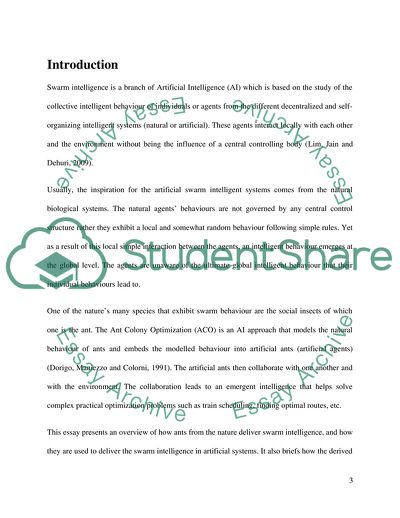Cite this document
(Modelling of Swarm Intelligence in Artificial Intelligence Coursework Example | Topics and Well Written Essays - 2000 words, n.d.)
Modelling of Swarm Intelligence in Artificial Intelligence Coursework Example | Topics and Well Written Essays - 2000 words. https://studentshare.org/information-technology/1804438-artificial-intelligence-for-me
Modelling of Swarm Intelligence in Artificial Intelligence Coursework Example | Topics and Well Written Essays - 2000 words. https://studentshare.org/information-technology/1804438-artificial-intelligence-for-me
(Modelling of Swarm Intelligence in Artificial Intelligence Coursework Example | Topics and Well Written Essays - 2000 Words)
Modelling of Swarm Intelligence in Artificial Intelligence Coursework Example | Topics and Well Written Essays - 2000 Words. https://studentshare.org/information-technology/1804438-artificial-intelligence-for-me.
Modelling of Swarm Intelligence in Artificial Intelligence Coursework Example | Topics and Well Written Essays - 2000 Words. https://studentshare.org/information-technology/1804438-artificial-intelligence-for-me.
“Modelling of Swarm Intelligence in Artificial Intelligence Coursework Example | Topics and Well Written Essays - 2000 Words”. https://studentshare.org/information-technology/1804438-artificial-intelligence-for-me.


